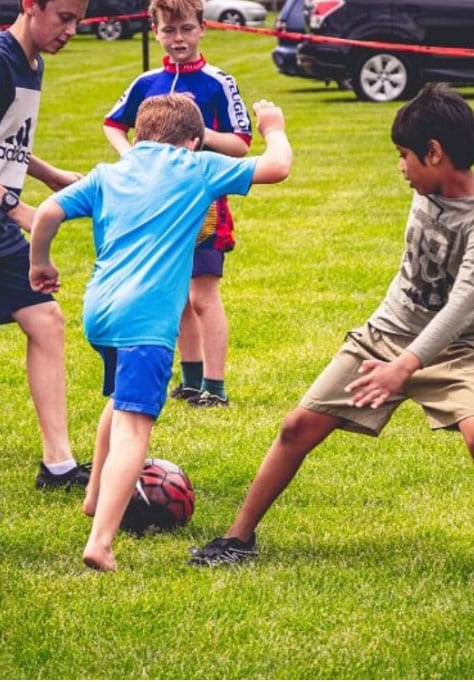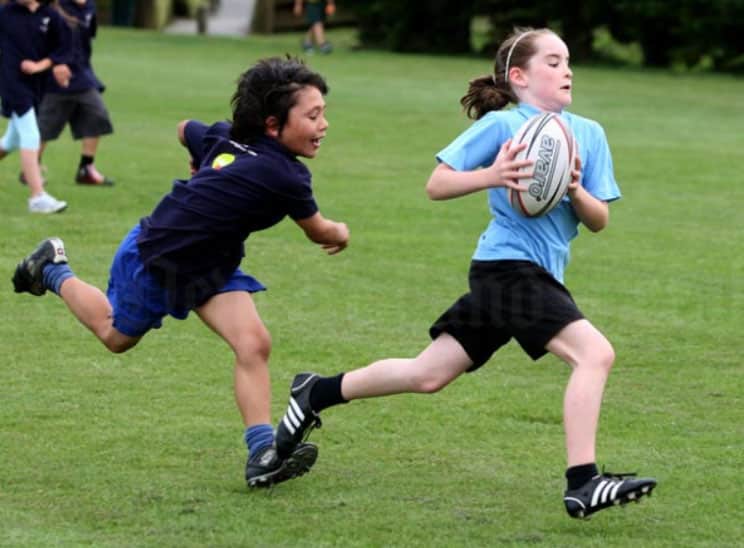Dyspraxic individuals may experience difficulties with the following activities:

Most neurotypical or “normal” people perceive the world with their imagination or mind’s eye located in a stable place located behind their head. Dyspraxic individuals perceive the world from a place in front of them and below their line of sight. The result is that their brain often sees something before their eyes do, so they can mis-time a catch, knock things over, bump into furniture, drop things or trip over kerbs. This gap between what the brain perceives and the eyes see is called disorientation. Sometimes we experience that when getting off a merry-go-round – it seems the world around you is moving and you’re not – it can be very uncomfortable and cause symptoms such as clumsiness, vertigo, dizziness and nausea.
I was an undiagnosed dyspraxic kid going to a small rural school in South Canterbury. I hated all team sports, because they involved balls that I couldn’t catch – ‘fumble-fingers Rachel’! I hated letting the team down with mis-catches and always being the ‘
When at the age of 50 I realized that I had dyspraxia and I could do something about it, it was such a relief! No more embarassment over dropping cups, spilling food or tripping over my toes! I have applied the Davis tools to help control my dyspraxic disorientations and find I make fewer mistakes, and am much more confident and reliable on my e-bike, shooting hoops, driving, writing and cooking.
During the Initial Consultation, I will assess whether a Davis Programme can help a client. It’s an informal, no-obligation consultation that enables us both to get to know each other a little, and decide if we’re comfortable to work together during a programme. We focus on a self-assessment of strengths and weaknesses, and the individual creates their own programme goals. I then tailor a programme to address those specific needs and goals, incorporating different activities to practice the core Davis tools of focus, relaxation, and energy management. Core concepts of change, consequence, time, sequence, order and disorder may also be incorporated in the programme. Each of these concepts are mastered in clay, then observed and experienced in the real world, so they become part of the individual’s identity.

Mathematics is about measuring change in an ordered and sequential fashion. However, people with dyscalculia often don’t have a solid grasp of the concepts of change, consequence, time, sequence, order, and disorder, so their ability to understand and use math concepts will be limited to memorization of facts, procedures, and formulae. In many cases, people with dyscalculia will also have dyslexia, and those who have dyslexia will often have difficulty with maths, even if it isn’t dyscalculia.
Dyscalculia affects people of all ages, genders, and backgrounds and has nothing to do with intelligence. People with high, average, and low IQs can struggle with dyscalculia, and it can impact day-to-day activities such as cooking, counting money, grocery shopping, and getting to places on time. As research into dyscalculia is still relatively limited, many people are living with dyscalculia under the assumption that they’re ‘stupid’ or just bad at maths. Many cases of dyscalculia aren’t discovered until the individual is well into adolescence or adulthood. At Master Dyslexia, I believe it’s important for people to recognize the signs of dyscalculia, so those struggling with the condition can seek dyscalculia treatment and support earlier in their education.
Time can be spent on developing organisation and sequencing skills, ball skills, riding bikes or scooters, tying laces, handwriting, organising essays, solving puzzles and organising rooms or desks. Again, these activities are linked to the individual’s own programme goals.
Don’t let the frustrations and low self-esteem associated with dyspraxia continue in your life or that of your child. Learn to be “just like other people” and participate fully in all of life! Contact me for a no-obligation chat.







‘S’ is a bright nine-year-old boy with an inquisitive and creative mind and a warm personality. He was experiencing the following issues:
“During his Davis Attention Mastery programme, ‘S’ learned to be able to control his perceptions with the Davis tools of Orientation, Release and energy Dial.”
These allowed him to more easily:

At his first review, ‘S’ commented that he was getting his backlog of maths tasks done. He was also getting his handwriting tasks done in class by avoiding talking to his friend, and felt happier to have his work ready for marking. At the school variety show he used his Davis tools to support a friend who got stage fright, and kept the performance going. He showed the new Year 4s around school and had been DJing on school radio – multi-tasking with four microphones.
‘S’s teachers have reported that he is more focussed in class, and his Hapkido teacher commented on his kindness shown towards others.
Dyspraxia, sometimes referred to as Developmental Coordination Disorder (DCD), is a hidden neurological disorder that affects an individual’s fine and gross motor skills. Often diagnosed in early childhood (and sometimes in adulthood), dyspraxia may affect all areas of development surrounding ideation, motor planning, and execution. A person with dyspraxia may experience ‘clumsiness’, a delay in early childhood development, and demonstrate organisational difficulties. Difficulties can impact simple motor skills such as waving, eating and walking, or more complex sequences such as brushing one’s teeth, tying one’s shoelaces or catching a ball.
Dyspraxia isn’t an intellectual disability, nor is it a learning disability. For those with dyspraxia, learning often isn’t an issue and dyspraxia can affect people with high, average, and low intelligence alike.
Essentially, they are the same thing, with different terms. DCD is more widely used in the US and Europe. Dyspraxia is the preferred term in New Zealand, but the two terms are interchangeable.
As dyspraxia occurs on a continuum, ranging from mild to severe, each dyspraxic individual experiences symptoms differently. Symptoms also vary across age-groups.
The cause of dyspraxia is unknown, but we do know that dyspraxic people are born with the condition. Research has shown that dyspraxic individuals have no clinical neurological abnormalities, but differences may have something to do with how neurons develop in the brain.
No ‘dyspraxic gene’ has been identified. However, research indicates where one case of dyspraxia exists in a family line; others may also be present, especially in the male family members.
Dyslexia is a condition that affects a person’s ability to perceive 2D symbols like letters and numbers, thereby impacting their ability to read, write, and spell. On the other hand, dyspraxia is a condition that affects motor skills coordination, planning, ideation, and execution. While they are different conditions, both can affect an individual’s ability to:
Before seeking a dyspraxia diagnosis, it’s important to visit your local doctor so they can rule out any medical conditions that may be mimicking dyspraxic symptoms. From there, your medical practitioner can refer you to a specialist, such as Master Dyslexia, for treatment and dyspraxia solutions. As with most conditions, it’s better if you can diagnose and treat dyspraxia early so children have the best support systems in place throughout their education and life. However, if you don’t get your dyspraxia diagnosis until adulthood, the Davis tools taught through Master Dyslexia can help you manage your dyspraxia.
There are three different types of dyspraxia, but some individuals can experience symptoms from two or even all three areas.
There are many types of dyspraxia treatment available, all of which are designed to help dyspraxic people manage their condition and thrive in their educational, work, and social lives.
The Davis Tools for Dyspraxia is a tried and tested set of tools designed to help people based in the Wellington region with dyspraxia.
I’m passionate about helping individuals shift their

Professional services described as Davis™, including Davis Dyslexia Correction®, Davis™ Symbol Mastery, Davis™ Orientation Counseling, Davis™ Attention Mastery, Davis™ Math Mastery, and Davis™ Reading Program for Young Learners may only be provided by persons who are trained and licensed as Davis Facilitators or Specialists by Davis Dyslexia Association International.